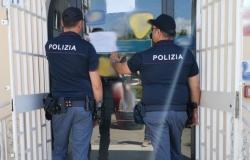The election weekend begins. All citizens of the province of Piacenza are called to vote for the European elections (brown card, (HERE THE CANDIDATES), while in more than half of the municipalities (28 out of 46) the polling station will also be given a blue ballot which will be used to vote for the new mayor and city councilors (HERE THE CANDIDATES) who will remain in office for the next five years. The polls open Saturday 8 June at 3pm and will remain open until 11pm; Sunday 9 June you will be able to vote from 7 am to 11 pm. For both consultations, all Italian citizens who have reached the age of majority (18 years), with a identity document (even expired) issued by a public administration and accompanied by a photograph (for example identity card, driving licence) and electoral card. You can vote in the electoral section indicated on the first page of your electoral card.
In case of loss of the electoral card or in the absence of empty spaces to affix the stamp, citizens will be able to request a new card at the municipal offices, which will also be open on election days. In Piacenza, the Quic branches in Viale Beverora will be available to citizens for the issuing of voter cards and identity documents, with extraordinary and extended opening hours to the public. You can contact the operators – exclusively for activities related to voting purposes only – Friday 7 June from 1.30pm to 6pm, Saturday 8 from 12.15pm to 11pm Sunday 9 from 7am to 11pm, coinciding with the opening of the polls. During these extraordinary openings it will not be possible to carry out other procedures, which will be carried out as usual during the usual operating hours of the branches.
The unknown abstention will once again weigh on the outcome of the vote. It is difficult to establish a direct comparison with other elections because in this round the polls are open for the first time on Saturday and Sunday. Turnout will be recorded on Saturday at 11pm, Sunday at 12pm, at 7pm and when the polls close at 11pm
How did the European elections go 5 years ago? A real one was recorded exploits of the League in the province of Piacenza with over 45%, as regardsprovincial turnout stopped at 64.4%. In 2019, the Northern League reached a record share of 45.3% in the European elections in Piacenza, the second party is the Democratic Party with 19.4%, the 5 Star Movement is third at 9.7%, followed by Forza Italia at 7.7, followed closely by Fratelli of Italy at 6.6. +Europe is at 4.5%.
HOW TO VOTE
EUROPEAN ELECTIONS – On the brown ballot, voters will be able to mark an X on the symbol of the party (or coalition) they intend to vote for. Furthermore, it will be possible to express up to three preferences (one, two or three) to vote for individual candidates for the European Parliament: in the case of multiple preferences (two or three) gender alternation must be respected (at least one candidate must be of a different sex from the other two). In the event that two preferences are expressed and they are both for candidates of the same sex, the second will be cancelled; however, the vote for the list and for the first candidate will remain valid. In the event that three preferences are expressed and they are all for candidates of the same sex, the second and third will be cancelled. Split voting is not permitted: the preferences, if present, must be expressed for candidates on the same list voted with the X. Voting for the list is valid even in the absence of an In case of identical surnames between the candidates, the first and last name must always be written and, if necessary, the date and place of birth. If the candidate has two surnames, the voter, when giving preference, can write only one. The indication must contain both surnames when there is the possibility of confusion between the candidates. Preferences are expressed by writing, in the appropriate lines drawn next to the mark of the voted list, the name and surname or just the surname of the preferred candidates included in the list itself.
MUNICIPAL ELECTIONS (MUNICIPALITIES OF UP TO 5,000 INHABITANTS)
Alseno, Besenzone, Bobbio, Calendasco, Caorso, Castell’Arquato, Coli, Farini, Gragnano Trebbiense, Lugagnano Val d’Arda, Morfasso, Ottone, Pianello Val Tidone, Piozzano, Ponte dell’Olio, San Pietro in Cerro, Sarmato, Travo , Vernasca, Vigolzone, Zerba, Ziano Piacentino
On the blue ballot, to vote for the mayoral candidate you need to draw an X on the symbol of his list or on the name of the mayoral candidate. Alongside, you can also indicate a preference for a candidate for the city council. The vote for the mayoral candidate is considered valid even if the preference is indicated on the side, and even in the absence of an Split voting is not permitted, the preference – if expressed – must concern a candidate from the same list as the mayor voted for.
MUNICIPAL ELECTIONS (MUNICIPALITIES BETWEEN 5,000 AND 15,000 INHABITANTS)
Castel San Giovanni, Gossolengo, Podenzano, Pontenure, Rivergaro, San Giorgio Piacentino
On the blue ballot, to vote for the mayoral candidate you need to draw an X on the symbol of his list or on the name of the mayoral candidate. Alongside, it is also possible to indicate one or two preferences for the candidates for the city council. In case of double preference, the candidates voted for must be of different sex, otherwise the second preference will be cancelled. The vote for the mayoral candidate is considered valid even if the preference (or preferences) are indicated on the side, and even in the absence of an X on the symbol. Split voting is not permitted, preferences – if expressed – must concern candidates from the same list as the mayor voted for.







